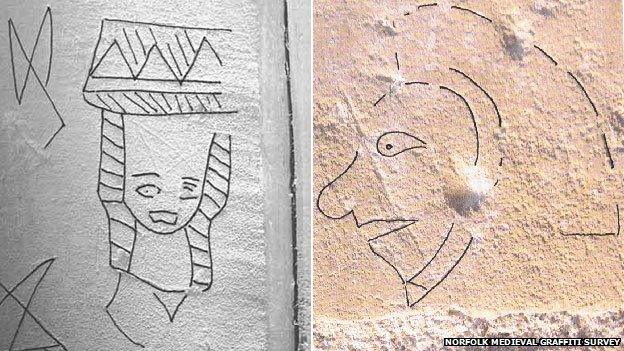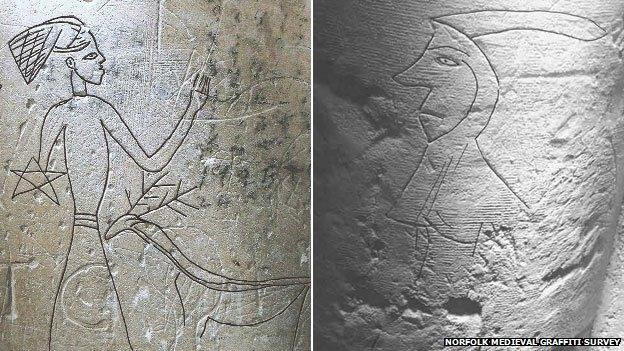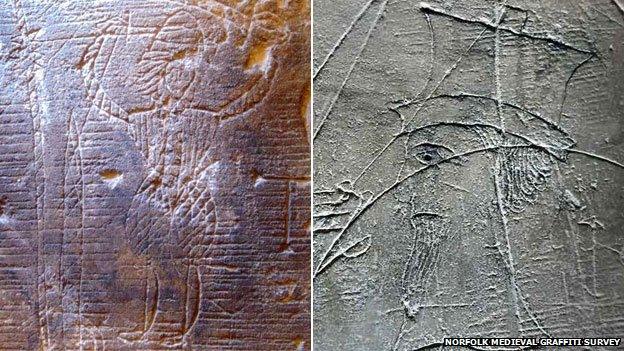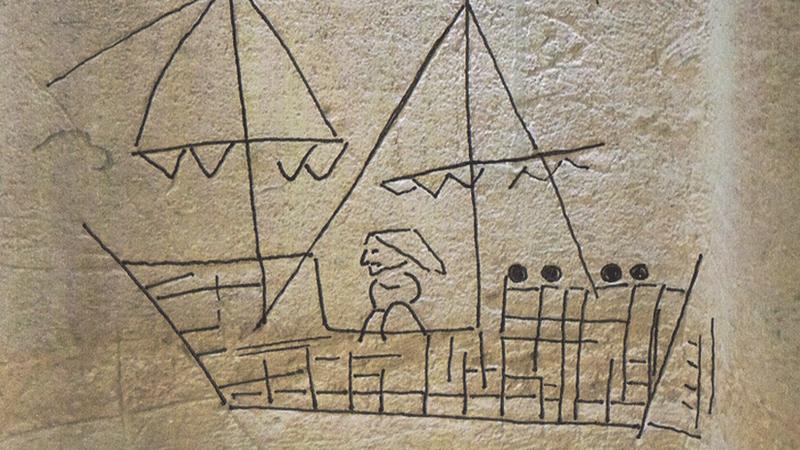Norfolk graffiti survey uncovers 'medieval selfies'
- Published

Matt Champion said a "few simple scratch marks" is the only evidence these people once lived
A survey of graffiti in churches in Norfolk has uncovered hundreds of "medieval selfies", hidden for centuries under limewash.
They were found by volunteers with the Norfolk Medieval Graffiti Survey.
Project archaeologist Matt Champion said what made the images special was they were of "medieval commoners" who lived their lives "leaving barely a mark on history".
The survey has been recording graffiti inscriptions in churches since 2010.
Volunteers use digital cameras and powerful lamps to reveal previously hidden or faded markings.
Mr Champion said: "They may just have been rough sketches of the people who made them, medieval selfies carved into the stones, or they may have had a deeper spiritual significance."

Women usually worshipped on the dark, north side of the church. Most female images are found there
Some of the images are related to devotion with hands raised in prayer, but others appear to be caricatures of real people.
Mr Champion said "faces and human figures are amongst some of the most common finds in medieval English church graffiti", but for him they were "really magical images".
"You can be shining your light across the surface... all of a sudden the wall is staring right back at you," he said.
"When you find yourself face to face with a representation of a real person, a long-dead parishioner or parish priest, the hairs do go up on the back of your neck."

Most of the images date to between the 15th and mid-16th Centuries
Unlike the marble tombs and memorial brasses of lords, knights and ladies, these images of "simple, common folk" have been hidden from sight for centuries, he added.
The project, which now covers Suffolk and six other counties, has recorded more than 28,000 inscriptions in Norfolk so far, and about the same number in Suffolk.
- Published21 February 2015

- Published20 July 2014

- Published7 January 2013
